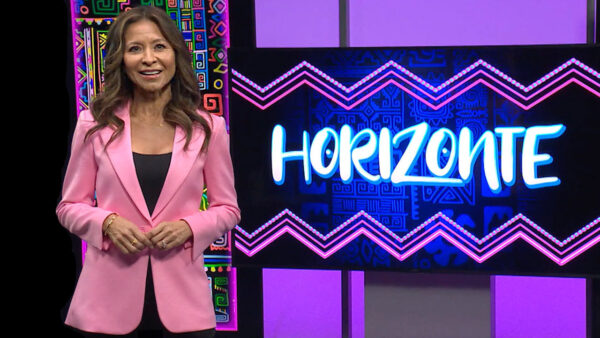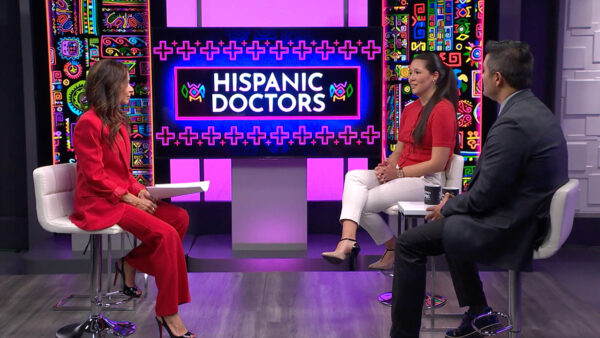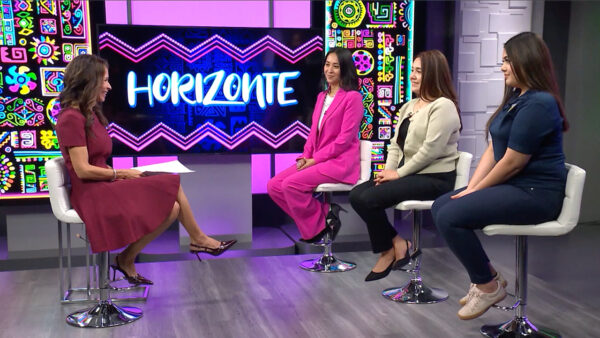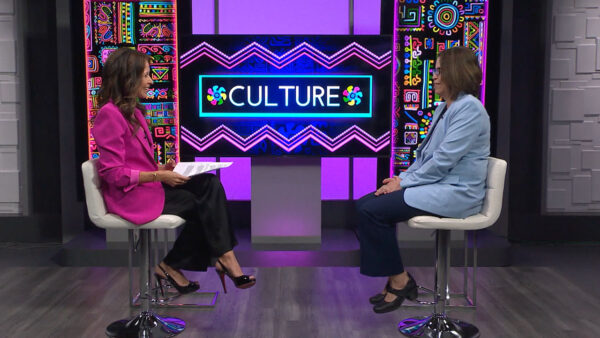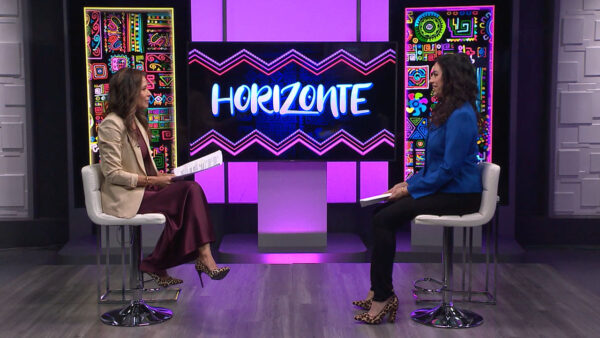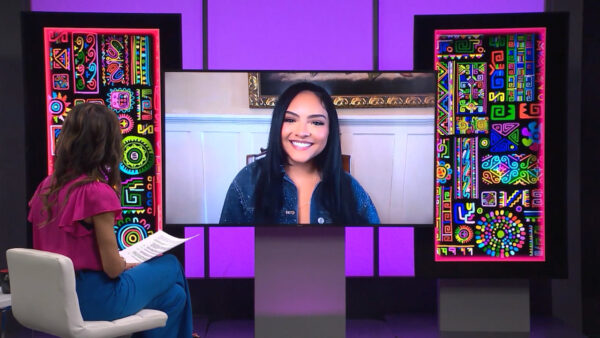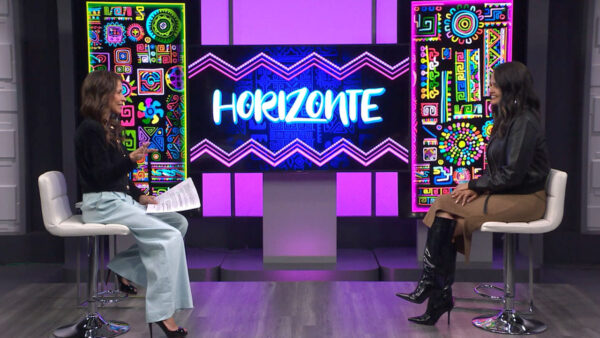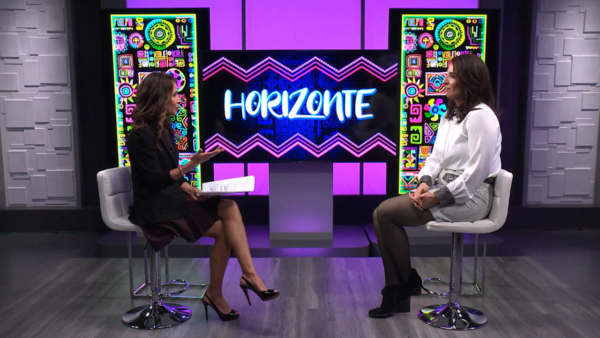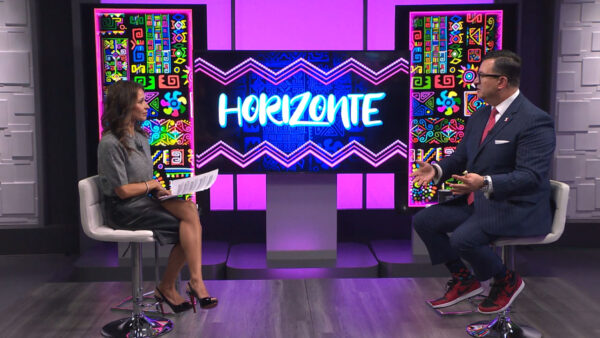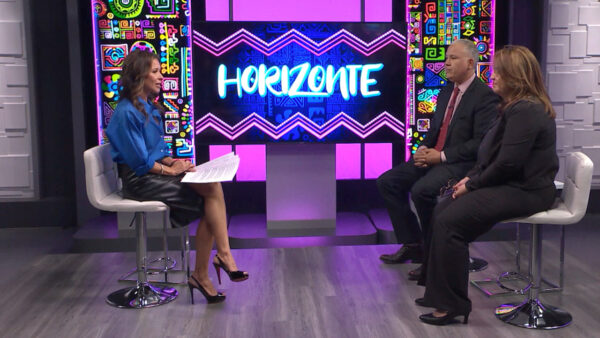The old Braun-Sacred Heart Church in Phoenix was an important part of religious life for many people living in old Mexican American barrio neighborhoods. Pete Dimas, executive director of the Braun-Sacred Heart Center, and Abe Arvizu, Jr., Chairman of the Board, talk about the church and the center.
José Cárdenas: Tucson Unified School District's Mexican-American studies program has been shut down by the passage of H.B. 2281 and books related to the curriculum has been removed from the district's classroom. Producer Luis Carrion reports on a book caravan that made a special trip to Tucson to deliver books to students and teachers that are no longer in the classroom.
Video: You stood up as being American, right? But now, you're standing up as being Chicana? How can you be both? Mexican-American classes such as these classes are no longer allowed in Tucson's largest school district. The governing board voted to shut the classes down after the school superintendent ruled that they were in violation of a law that was once House Bill 2281. Attorney general Tom Horne is the architect of the bill and he was in Tucson. He says the law will impose financial penalties to the district if they continue. Technically they're in violation because those courses are designed for students of a particular ethnic group but the cases recognize that administrators have to administrator laws with a certain amount of discretion and judgment. In this case the only complaints we received were about the Mexican-American studies program and we received an overwhelming number of complaints that the course was taught in a racist way. We got zero complaints against any of the other courses. TUSD was forced as part of the requirements to eliminate the Mexican-American studies courses through House Bill 2281 and as part of the requirement, educators were asked to remove from classrooms all books associated with the curriculum. In many cases, this happened during school time. While we were in front of the class giving the presentation and they were taking the books out and making my teacher get the books to hand them off to her and this is all going on and we're over here trying to go with the presentation so we're looking. Crystal is a senior at Tucson High School. She's proud to say that she's successful in academics and she attributes much of her success in part due to her exposure to the Mexican-American study program. It gave me a sense of family and it gave me more motivation to actually go through with school. With a quote/unquote regular American history class, I couldn't relate to it with two or three pages of Pancho Villa didn't explain anything to me. And it was starting to get like, "Okay, I want to know did the Mexican-Americans have any contributions?" I started questioning a lot of things and a lot of teachers didn't like that. For the general election, you have everybody on the ballot. She says one of the first things she did when she turned 18 is registered to vote. She says she and her fellow students, many of whom are already accepted into college want to ensure that a program that has helped them succeed survives the current debate surrounding ethnic studies. This is where history begins, it's over here. On a recent Saturday, she attended an event Downtown that was sponsored by a group known as "Libros Traficantes" that's Spanish for "book traffickers". They originated in Texas and brought to Tucson a supply of books they say have been taken off the shelves in TUSD. When we heard they had dismantled it, it didn't quite sink in until we saw young people who said that their teachers were forced to walk into classrooms during class time, in front of them and box up books by their most beloved authors. We've got a ton of books over there at the community center. Tony Diez led the "Libro Traficante" caravan that included people from various states. The list of authors is not long but it includes literature that was considered important for the Mexican-American studies curriculum, a curriculum that looks at the role of Mexican-Americans in the cultural history of American society. So we plan to keep coming back. He says that although the district says the books are not banned and are still available to the students, they are not made available to the classrooms. But if they were to look up the word "ban" in the American Heritage Dictionary, the ban is defined by prohibiting a book. And I'm sorry, the law, House Bill 2281 prohibits courses which led to de facto ban. Whatever they want to call it, they're playing with words. From what I've heard from the people that are with the group "Libro Traficante" is the idea that they're going to bring back these books. These books are already here. Abel Morado is the TSUD's Assistant Superintendent of High Schools. He was the principal at Tucson High at the time the books were removed from the classrooms. There is a stiff penalty connected to that that if we were not compliant then obviously we face sanctions from the state. He says the administrators and teachers had to quickly figure out how to comply with the state mandate and take the books out. So the direction was that we needed to eliminate them. We needed to change the courses, and then included in that was the acquisition of these books and needing to take them out of classrooms, which is never a good thing and puts people in a real tough position. You know, it was tense. It was apprehensive but at the same time we were following through and trying to do the best jobs that we could. According to him, the decision to remove the books from the classroom was difficult but he says they are not banned and are available to students and libraries throughout the district. The state superintendent order did not extend to libraries and I will say to you that we have not banned books. We had to remove them from the curriculum because they were part of the lawsuit. They have made decisions that are fundamentally contrary to our own values. We don't ban books. They've banned books. Richard Martinez is the lawyer representing the plaintiffs in an ongoing lawsuit where students challenged the legality of the law used to stop the teaching of Mexican-American studies. He says currently the case is under review and anticipates the judge will rule in favor of the students he represents. He contends that the books in spite of the semantics that are used when discussing the topic were effectively banned. They took those books out of the classroom. They have prohibited in writing the teachers and Mexican-American studies from teaching anything from that perspective from using any of their materials that was developed in the program and from utilizing any of the written materials, including any of the books. That's banning. We're an American government now but that's different. While the debate on banned books continues, Martinez says that it is now up to the courts to determine the future of the Mexican-American studies classes in the Tucson Unified School District. A decision on the summary hearing is expected in about two months.
José Cárdenas: The Old Sacred Heart Church in Phoenix was an important part of religious life for many people living in old Mexican-American barrio neighborhoods. The Braun-Sacred Heart Center is an organization dedicated to restoring and preserving the history of the church. The center is also working on a documentary that has been designated as an Arizona Centennial Project, focusing on the Latino role in Arizona's history. Earlier, I talked with Pete Dimas, Executive Director of the Braun-Sacred Heart Center and Abe Arvizu, Jr., Chairman of the Board for the Braun-Sacred Heart Center about the church and the center. Thank you, both for joining us on "Horizonte." Pete, you've been on before to talk about other aspects of Latino history in Arizona. This has been around for a long time. It's important to the community. I know Abe's been involved in it for a long time. Let's start, though, by talking about Father Braun. We've got some pictures that we want to show of him at various stages in his life with respect to the church. I think this picture is of an outdoor mass after the church was being constructed?
Pete Dimas: In that time frame yes it is. The thing is that Father Albert came from St. Mary's Church.
José Cárdenas: In downtown phoenix.
Pete Dimas: Where he was teaching and he brought a lot of students with him to work in the barrios of Phoenix. This is after World War II when our society was a lot more inclusive. When Father Albert shows up, the people are already pushing for their own church. They started pushing for it in the 1930's but the depression put it off, and then World War II came.
José Cárdenas: And he was physically involved in the construction of the church. I know we've got a picture of him in work clothes standing up on one of the walls. Was he was the founding priest?
Pete Dimas: Yes, he was.
José Cárdenas: There's the picture that we were talking about.
José Cárdenas: He has a history of building churches throughout the Southwest. And he wasn't the kind of person to want to stay enclosed in one room. So he brought the people into the Golden Gate area. And once he did that, the Golden Gate people, by the way, were fairly united. They already wanted their church but they wanted a priest they could trust and they made him prove it and he did. There was a synergy that came out of there.
José Cárdenas: Did you know Father Braun?
Abe Arvizu, Jr.: I was very young but I do remember him.
José Cárdenas: We've got another picture of him with more traditional clerical garb. He was something special for the people in the community.
Abe Arvizu, Jr.: He was one that brought hope to the people at that time. We didn't have sidewalks, dirt roads and he brought that to the community, getting the sidewalks and the roads put in. And he started to give them something to look forward to and to expand on and realizing that they needed to have something to survive in life and that was an education. He was a very strong pusher for education coming from St. Mary's in '49 and in '51 he came over with us. That was a thing that he pushed very, very strongly.
José Cárdenas: And the area we're talking about of this neighborhood and other churches is just west of the airport.
Abe Arvizu, Jr.: It is just west of the airport.
José Cárdenas: That was heavily affected when they decided to expand the airport, and there's not much left.
Abe Arvizu, Jr.: It was the acquisition which took place in the West approach land acquisition and that had been going on for 30, 35 years. I remember going to the meetings back when I was in eighth grade in the early '70s and being a youth representative on some of the different committees and the neighborhood association groups and our parish council. So all of us, all of the community was working together in trying to see what was the best fit for us.
José Cárdenas: And we have a couple of pictures of the church as it stands now and that's basically all that's left. I think we've got a picture of the front and the side. The rest of the neighborhood is gone.
Abe Arvizu, Jr.: Yes, everything else is gone. I think the last standing building other than the church is the old Wilson Gym, which was built after the fact but other than that, the old church is the last thing.
José Cárdenas: It's surrounded by fences. And that's pretty much the neighborhood now.
Abe Arvizu, Jr.: That's it.
José Cárdenas: So Pete, what is the Braun-Sacred Heart Center all about and what purpose does it serve these days?
Pete Dimas: It's in the realm of symbol because that church symbolizes all those people's lives that were disrupted by this move. They had been -- how shall I say, relocated individually but that's one symbol that reminds them of what their lives were like, the people that lived there. And you need to understand that when Father Albert shows up, it's also a major period of transformation. You were talking earlier about the last time I was here dealing with the veteranos.
José Cárdenas: Talking about Post 41.
Pete Dimas: Post 41, yes. Father Albert was a lifetime captain and a very active community organizer. I think what we have here is a person who comes into the barrio, understands how politics and activism works in the United States with a group of people who have come back from war who understand that their role is much more than they thought it was to a pre-existing community that was already tight and what you have is a synergy that allows you to do some of the things that you are hearing from Abe about getting the streets improved, the lights put in. Building a school. He started building a school before he got permission to do so. Better to ask for forgiveness than ask for permission.
José Cárdenas: Even for a Catholic priest. And that sense of community that Pete was talking about I think is captured very beautifully in another picture that we have of a first Holy Communion class. I don't know if this is yours. I don't know if this was yours we'll have it on the screen you can see if it's yours. You see all these children who were impacted by him and some of them are grown adults now, active in the community. What has led you to spend the time you have, the years you have as Chairman of the Braun-Sacred Heart Center.
Abe Arvizu, Jr.: Well, I think it was the continuation of family ties. We were all a family together. Maybe different names, different people, different races but we were all Golden Gaters. We were all together and we did everything together and the continuation was just when the elders started to pass the baton onto the next group and when my dad passed away I took up the baton and kept running. That's the thing that's the continuation is the actual having that history and this is what it's all about is the history.
José Cárdenas: A big part of that history or major aspect of it was the involvement of the church with Cesar Chavez.
Cesar Chavez, Santarita Center and others that's all part of history, Arizona history and it was very, very important because, you know, he came to Sacred Heart Parish and we gave him Santarita Center to do his fast. And so his second fast was done there. He picked it with us and that was the movement that was the start of the movement here in Arizona. The continuation of what was going on elsewhere. And that showed the people the love of the people they had for each other and to do better and to better each other.
José Cárdenas: Pete, you mentioned I think in the introduction that this is going to be involved in some fashion in the Arizona Centennial. There will be some involvement with the Braun-Sacred Heart Center. Tell us about that.
Pete Dimas: The documentary is one I think is critical for our time because people don't understand how long the Mexican population has been in Arizona. And we've been designated as a legacy project for something that we call "Arizona's Mexican Heritage, an American Story" that begins with a movement north from New Spain or Central Mexico up to Arizona, beginning in the 1540's to the present up to the time of the railroad. Then taking it another section of it, taking it from the time of the railroad or the industrialization of the United States and the critical role played by Mexican laborers in developing Arizona. I interviewed Joe Torres, who was with us for so long, and I asked him a question, "Why is the history important?" He said they have to know that we, the Mexican people, we built this town. That's the sense of these old timers. Another aspect of the documentary is taking a look and this is statewide, by the way.
José Cárdenas: I understand you interviewed former Governor Raul Hector Castro.
Pete Dimas: I did. He has his opinions about things are today.
José Cárdenas: You're going to have to give us a real quick segment. We have about 20 seconds.
Pete Dimas: He doesn't like the racial profiling. Just straightforward. He feels it pretty deeply.
José Cárdenas: And I'm afraid that's about all we're going to be able to say about this documentary but I promise we'll have you back to talk more about it. Thanks for joining us on "Horizonte." That's our show for tonight. From all of us here at "Horizonte," I'm José Cárdenas. Have a good evening.
Pete Dimas:Executive Director, Braun-Sacred Heart Center; Abe Arvizu, Jr.:Chairman of the Board;










